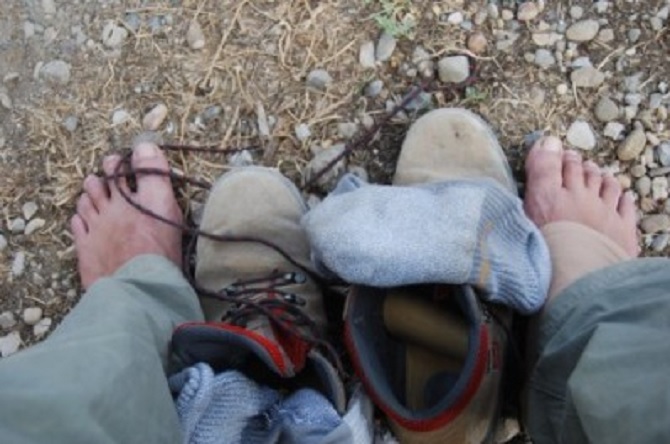
How much training and health preparation you do for the camino very much depends on your current fitness levels. It takes a fit person to walk almost every day for 4-8 weeks, and the stamina required to keep it up needs to be built up. If you are involved in some type of sport already; that is, if you are a runner, a cyclist, a squash-player etc, it is important that you realize that walking requires a different sort of athletic ability, and needs to be trained for. People who are very fit, very healthy cyclists and runners, and most of them are surprised to discover how hard walking was and what different demands it had on the body. A lot of people like this do not train, assuming their own sport to to have prepared them adequately for what seems like an easier activity. They learn through the camino that it is wise to honour long-distance walking with a type of reverence, and it is prudent to prepare well in advance.
Below are just pointers that will help you get focussed on improving your health and vitality levels (if you need to) before you leave for the camino.
Physical Training: Walking
The camino always take us by surprise and no matter what preparation we engage in, the walk and its impact on the body can never be fully anticipated! But training makes a huge difference for the less hardy, or less active types. If you have been given a clean bill of health, you might want to begin with 5 km walks in your neighbourhood or in the gym, and do these as often as you can. After a week or so, you can increase the distance and your speed to 7 km. Keep increasing the distances as your body adjusts and gains in fitness.
Buy Your Footwear Three Months Before
If you don't have already well worn-in walking shoes or hiking boots, it is wise to buy a good pair three months before you leave and do all your training in them. If you're the person who decides to train for a whole year before, train in the same shoes that you wear on the camino. Buy a pair that leaves a little bit of space for your feet to swell, as they will do this when walking long distances every day. Try to wear the same socks too, the ones without seams (seams can rub on the toes and cause discomfort).
As you are most probably already aware, long distance walking on ever-changing terrain is hard on the feet. The camino roads can be rocky, bumpy, full of shale, sandy, muddy, slippery and very, very uneven. Short distances along uncompromising roads can take a toll on the feet and ankles, and the rigours of postural adjustment can be experienced throughout the rest of the body in stiff muscles later on. Sometimes you are walking on sloped pavements and other times on tarmac. You will climb steep inclines and descend down slopes that seem almost vertical. This plays havoc with the knees, and if your footwear is not tied correctly, your toes will bash into the front of them as they slide forward with every step. So training in the footwear that you use on the camino can pay dividends in the long-term. This applies especially if you are able to train on most of the terrain that I mentioned above. You will learn how to adjust your shoes for comfort when climbing and walking downhill. Your feet will form a relationship with your shoes, and you will benefit greatly from this.
Walking in footwear that is different to the ones you trained in may pose foot-adjustment problems, and you may go through the blister and foot-callousing stage all over again. This can make for an uncomfortable start to your camino.